什么是组件化?
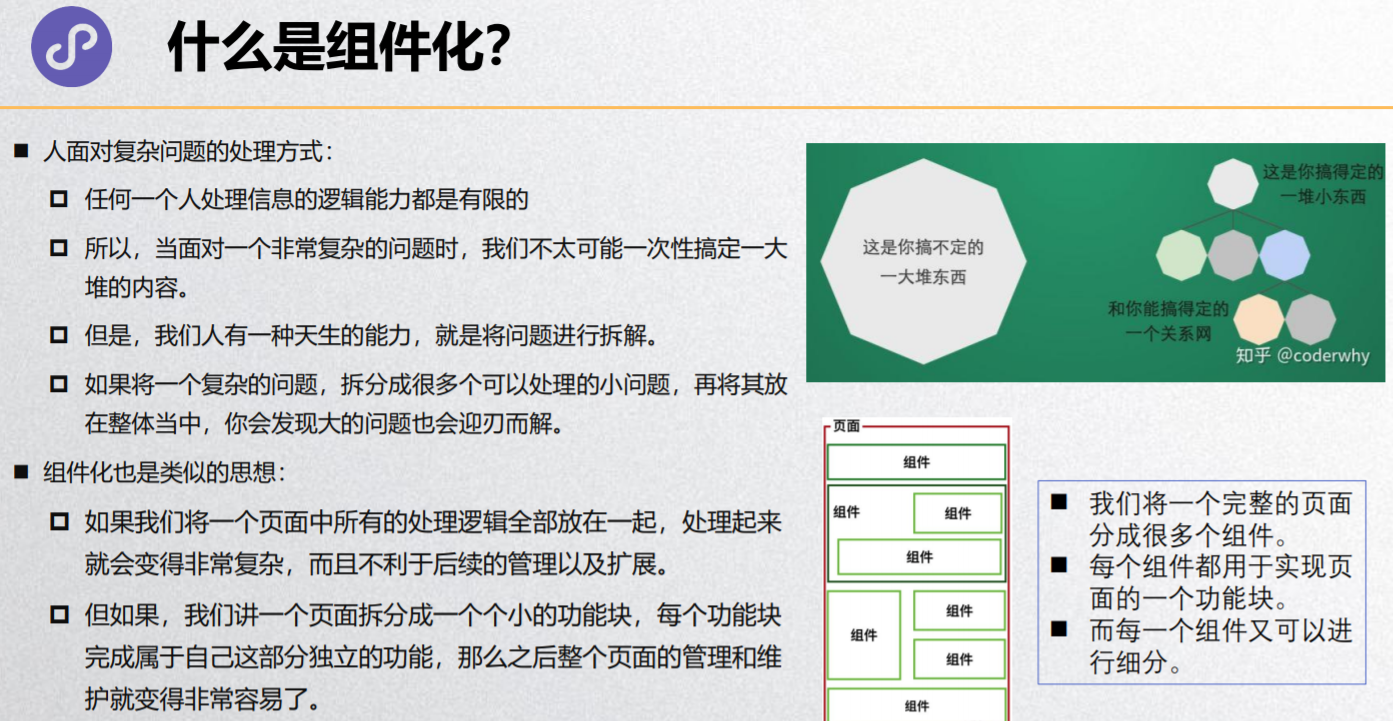
小程序组件化思想
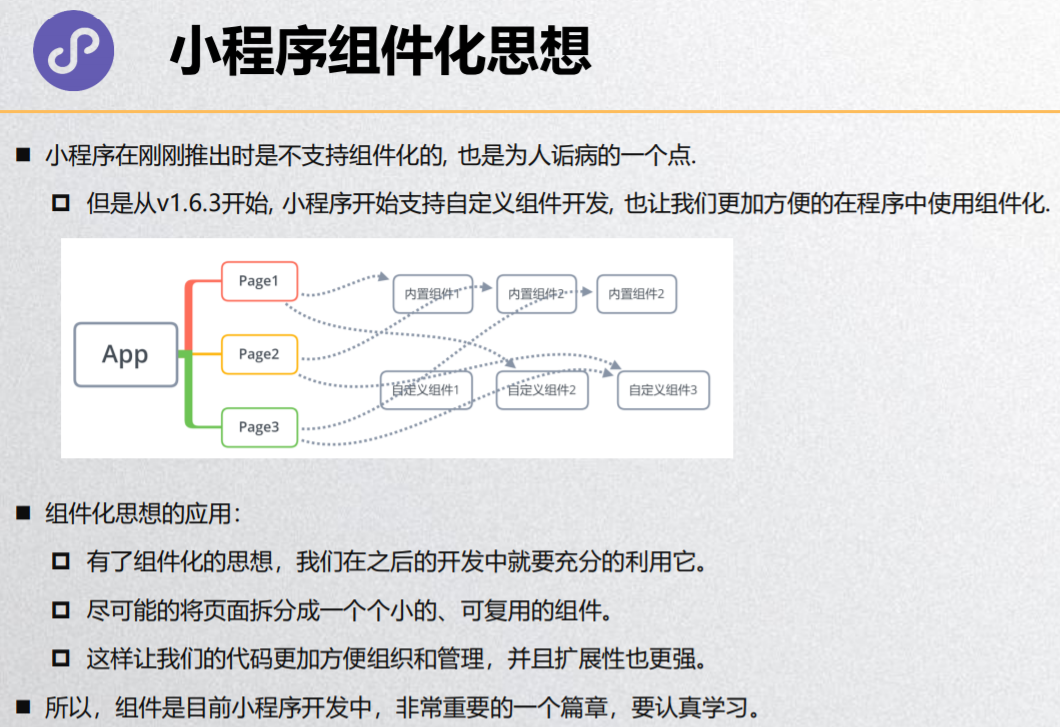
创建一个自定义组件
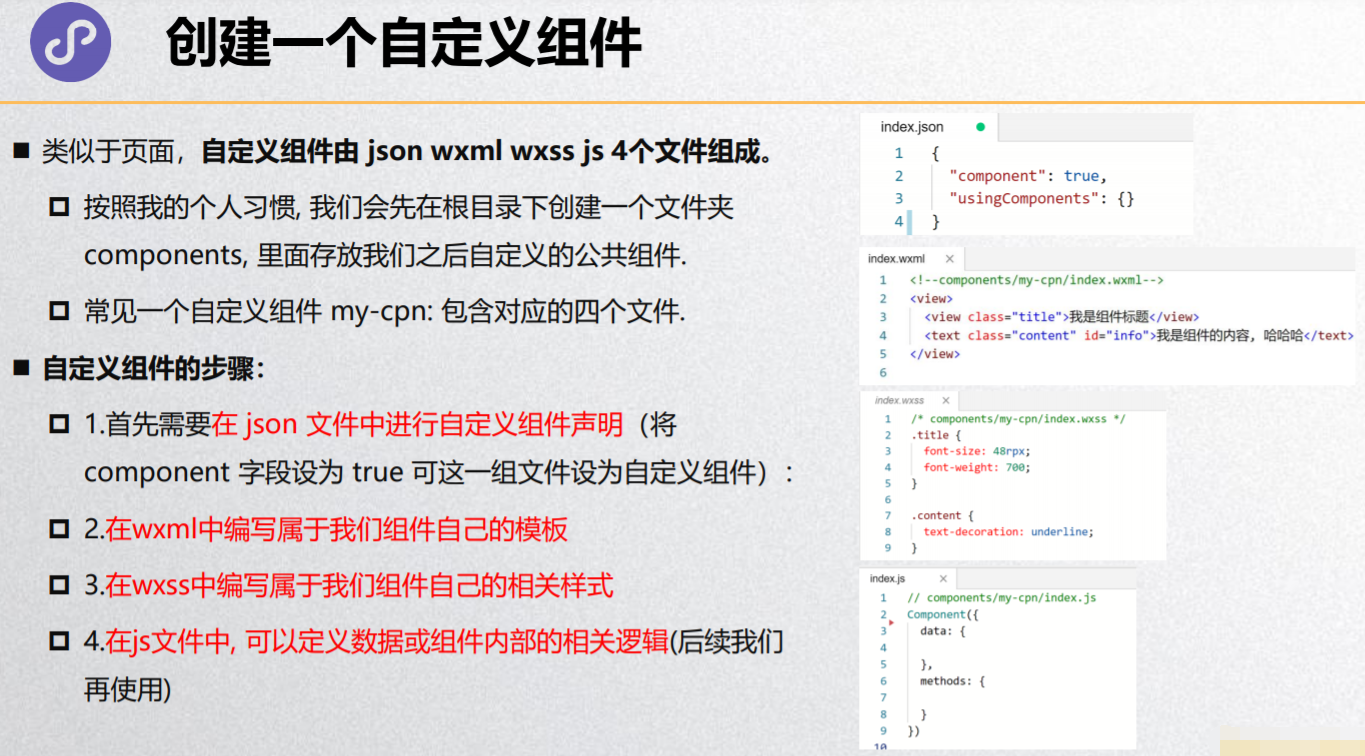
使用自定义组件和细节注意事项
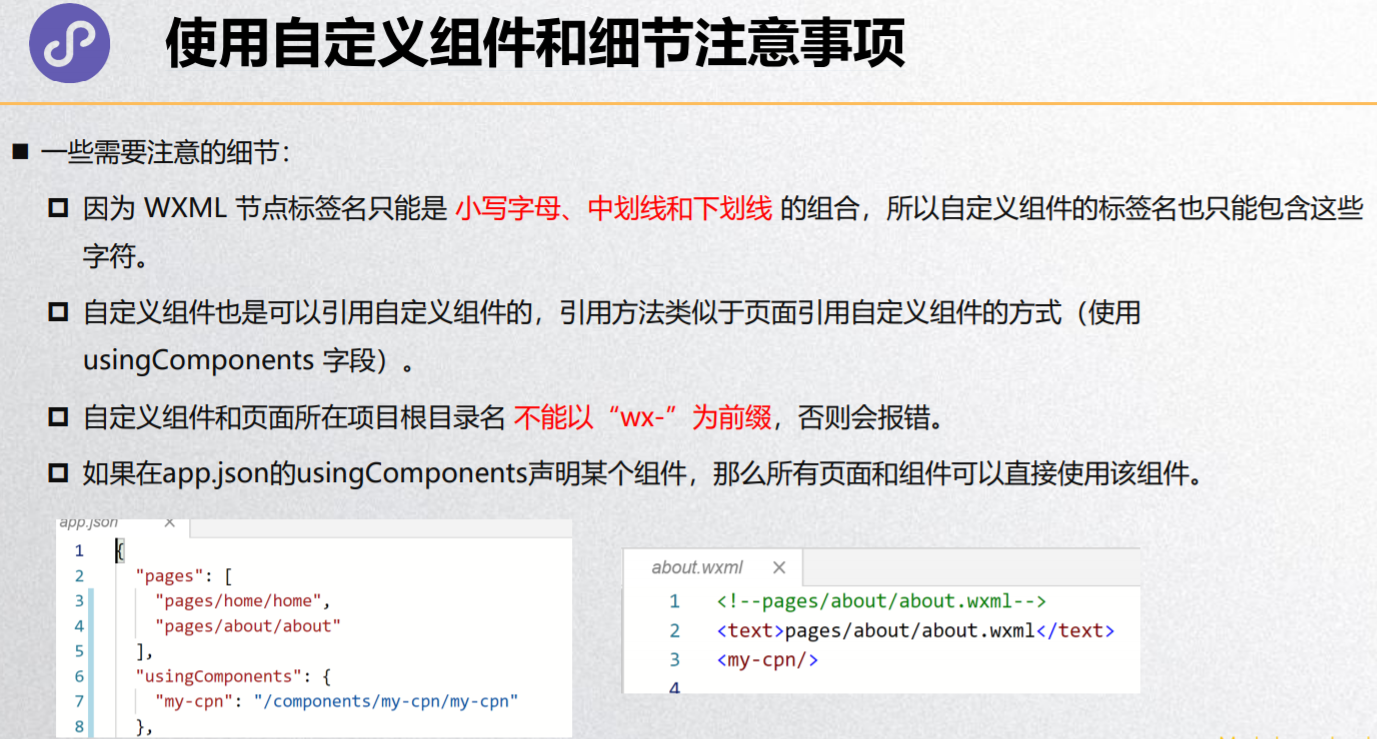
组件的样式细节
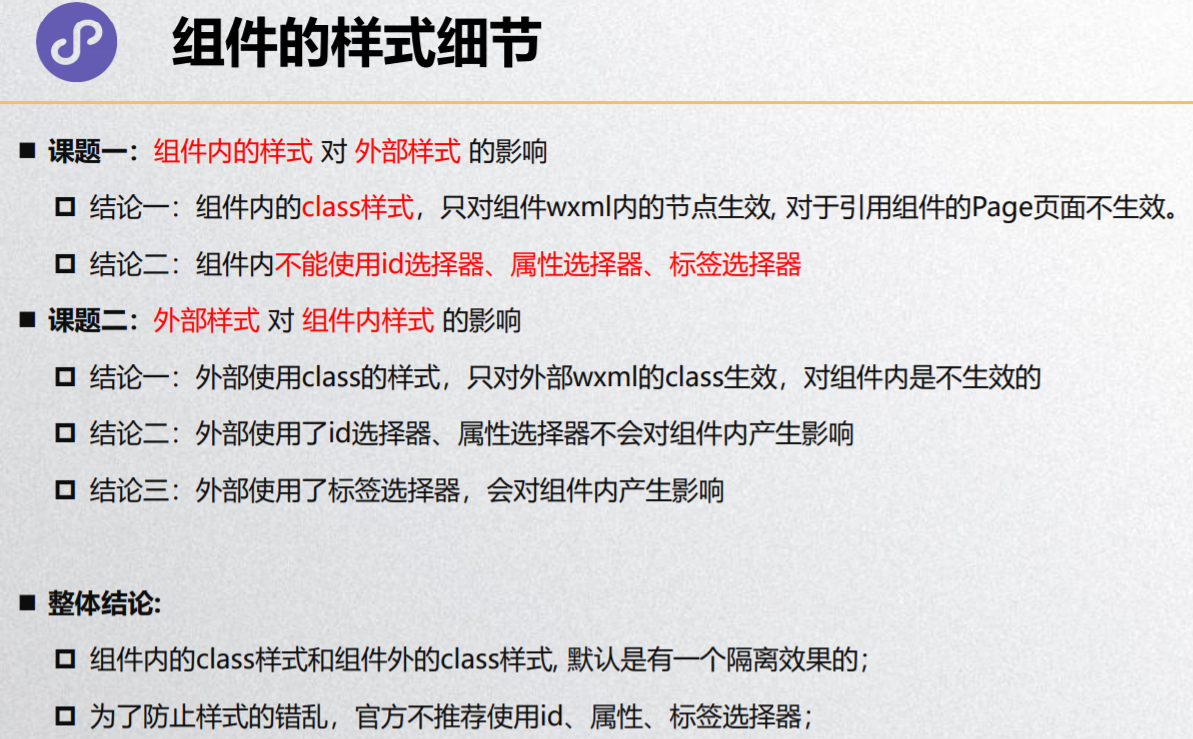
样式的相互影响
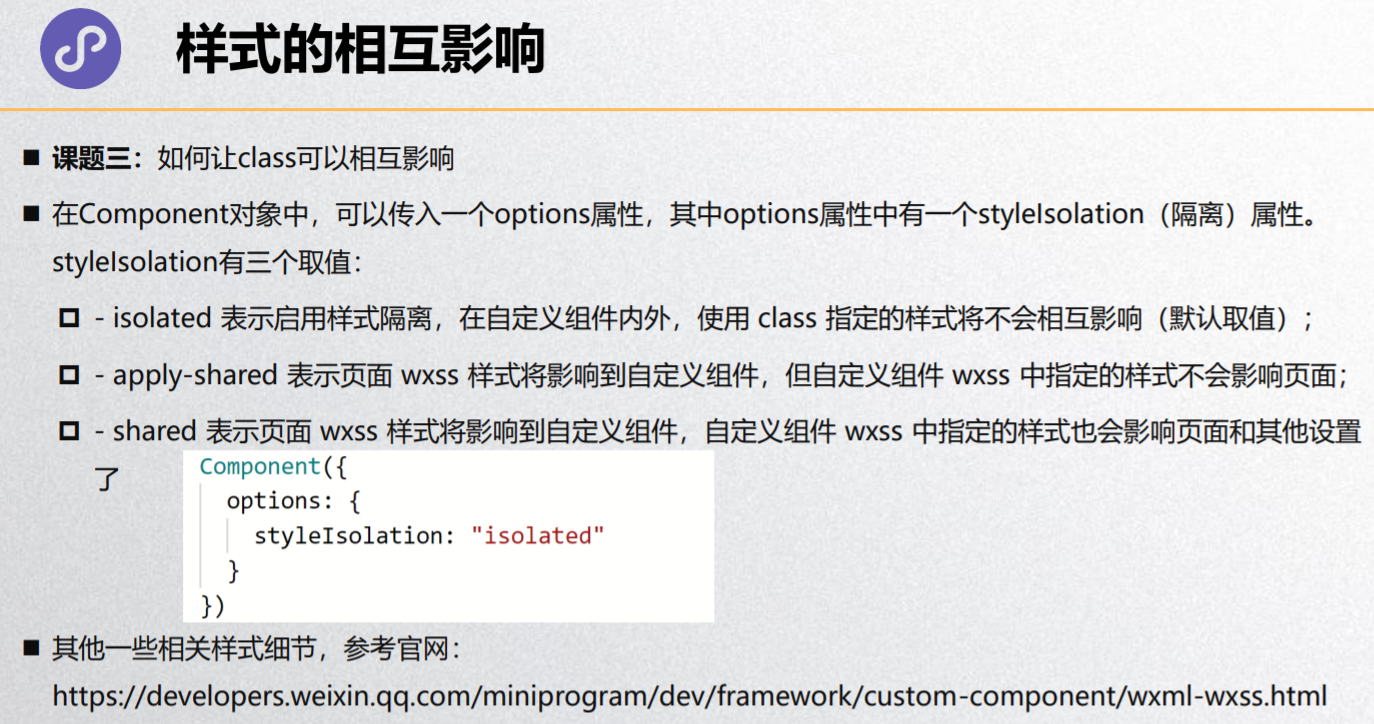
my-style.wxml
<!--components/my-style/my-style.wxml-->
<view class='title'>我是style标题</view>
<view class='content'>我是style的内容</view>
my-style.wxss
.title {
font-size: 50rpx;
font-weight: 700;
}
.content {
font-size: 36rpx;
}
my-style.js
Component({
options: {
styleIsolation: "shared"
}
})
组件和页面通信
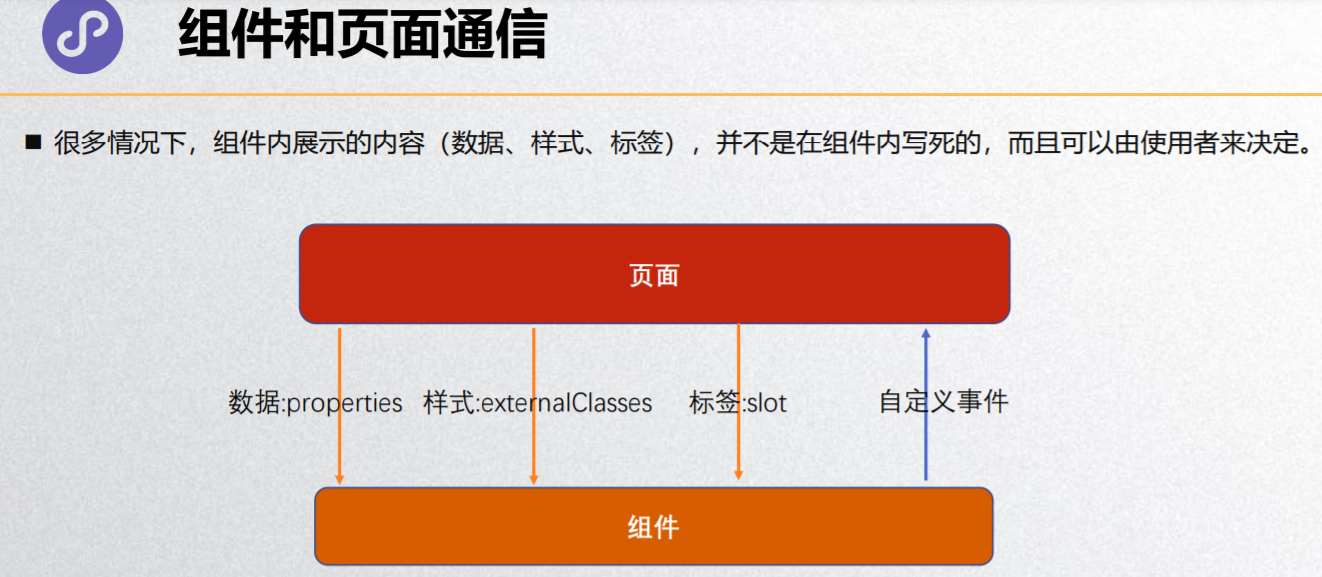
向组件传递数据 - properties
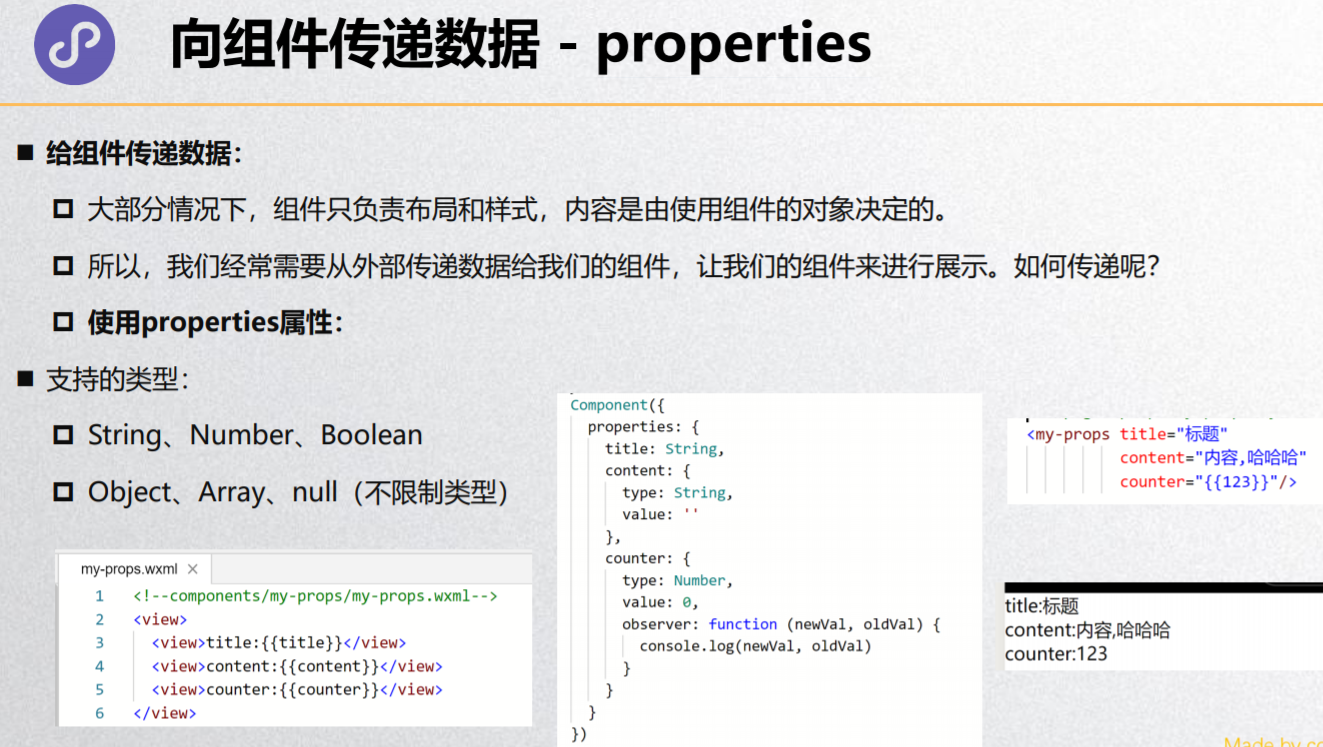
向组件传递样式 - externalClasses
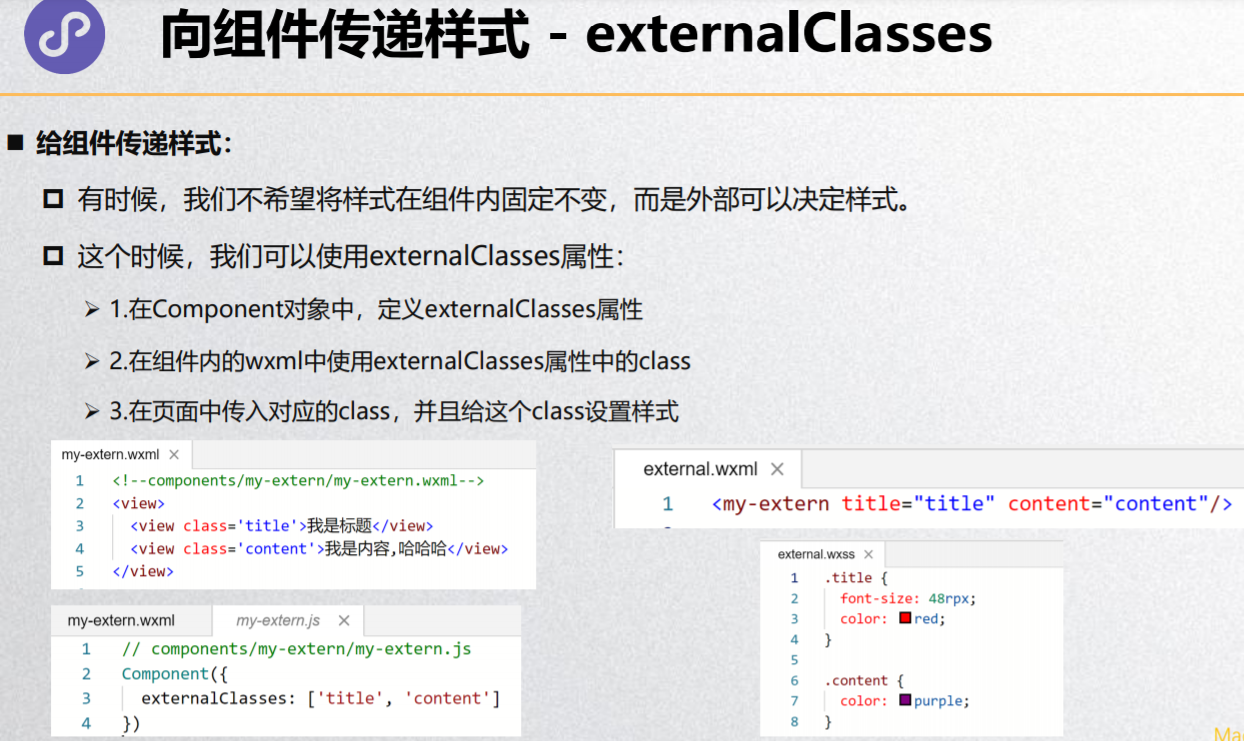
my-prop.wxml
<!--components/my-prop/my-prop.wxml-->
<view class='title titleclass'>{{title}}</view>
<view class='content'>我是组件的内容</view>
my-prop.js
// components/my-prop/my-prop.js
Component({
properties: {
// title: String
title: {
type: String,
value: '我是默认的标题',
observer: function(newVal, oldVal) {
console.log(newVal, oldVal)
}
}
},
// 类名不能是小驼峰titleClass,否则不生效
externalClasses: ['titleclass']
})
home.wxml
<!-- 3.给自定义组件传递数据/样式 -->
<my-prop title="哈哈哈" titleclass="red" />
<my-prop title="呵呵呵" titleclass="green" />
<my-prop titleclass="blue" />
home.wxss
/* pages/home/home.wxss */
.title {
color: red;
}
.red {
color: red;
}
.green {
color: green;
}
.blue {
color: blue;
}
组件向外传递事件 – 自定义事件
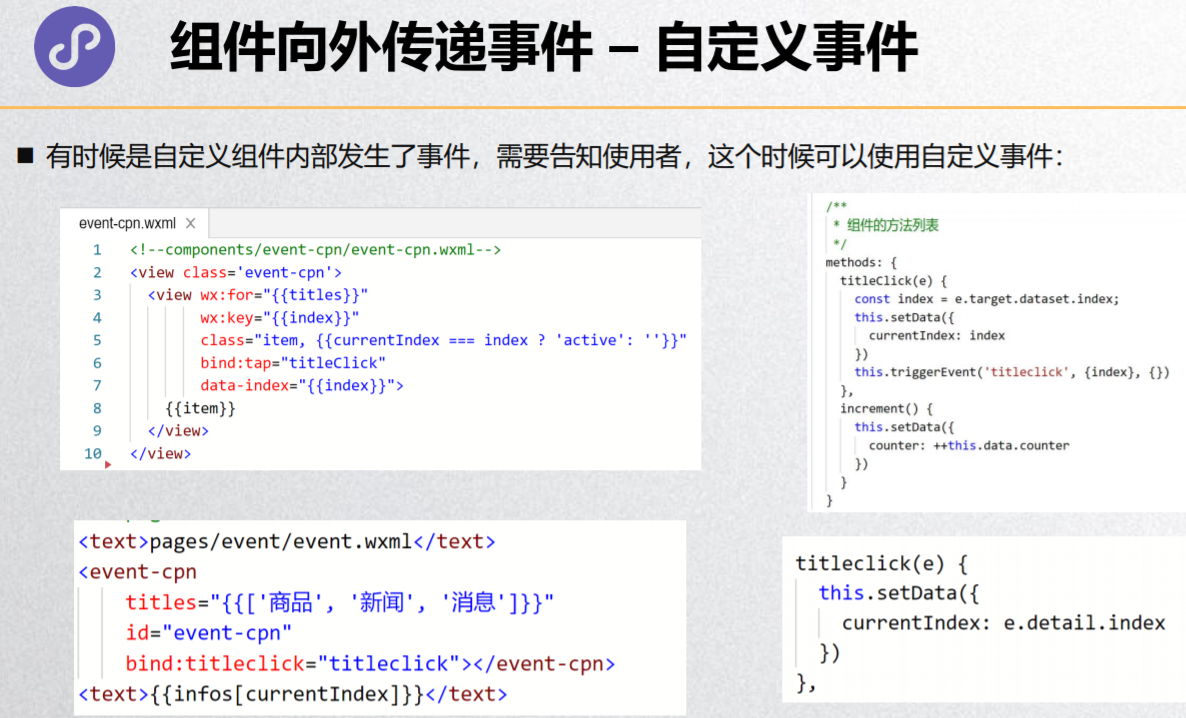
自定义组件练习
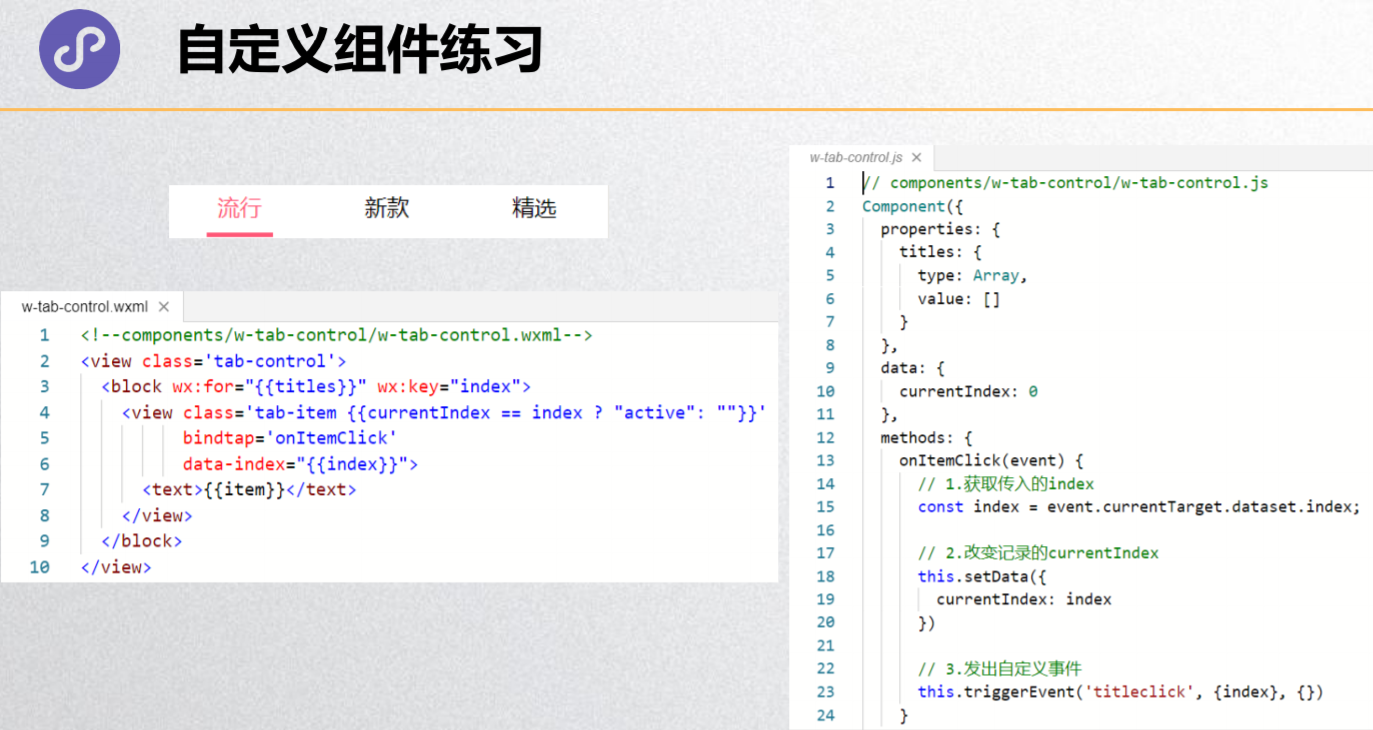
my-event.wxml
<button size='mini' bind:tap="handleIncrement">+1</button>
my-event.js
// components/my-event/my-event.js
Component({
methods: {
handleIncrement() {
// console.log('---------')
this.triggerEvent('increment', {name: 'why', age: 18}, {})
}
}
})
home.html
<!-- 4.组件内部发出事件 -->
<view>当前计数: {{counter}}</view>
<!-- 注意,这里不是 bind:tap -->
<my-event bind:increment="handleIncrement" />
home.js
handleIncrement(event) {
console.log('---------', event)
this.setData({
counter: this.data.counter + 1
})
}
页面直接调用组件方法
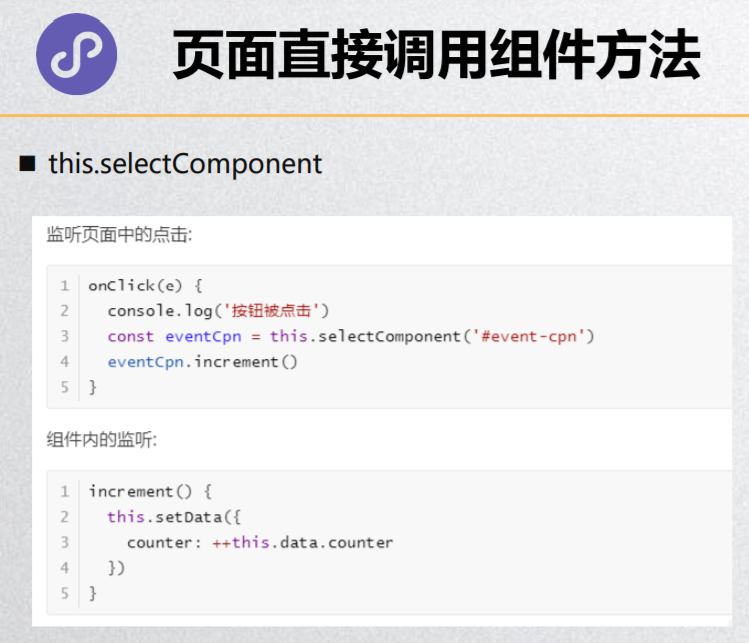
home.html
<!-- 6.直接选中组件修改数据/调用方法 -->
<button size='mini' bind:tap="handleIncrementCpn">修改组件内的数据</button>
<my-sel class="sel-class" id="sel-id" />
home.js
handleIncrementCpn() {
// 最终目的: 修改my-sel中的counter
// 1.获取组件对象
const my_sel = this.selectComponent('.sel-class')
console.log(my_sel)
// 2.通过setData修改组件中的数据(不合理)
// my_sel.setData({
// counter: my_sel.data.counter + 20
// })
// 3.通过方法对数据进行修改
my_sel.incrementCounter(10)
}
my-sel.wxml
<view>组件内的计数: {{counter}}</view>
my-sel.js
Component({
data: {
counter: 0
},
methods: {
incrementCounter(num) {
this.setData({
counter: this.data.counter + num
})
}
}
})
什么是插槽
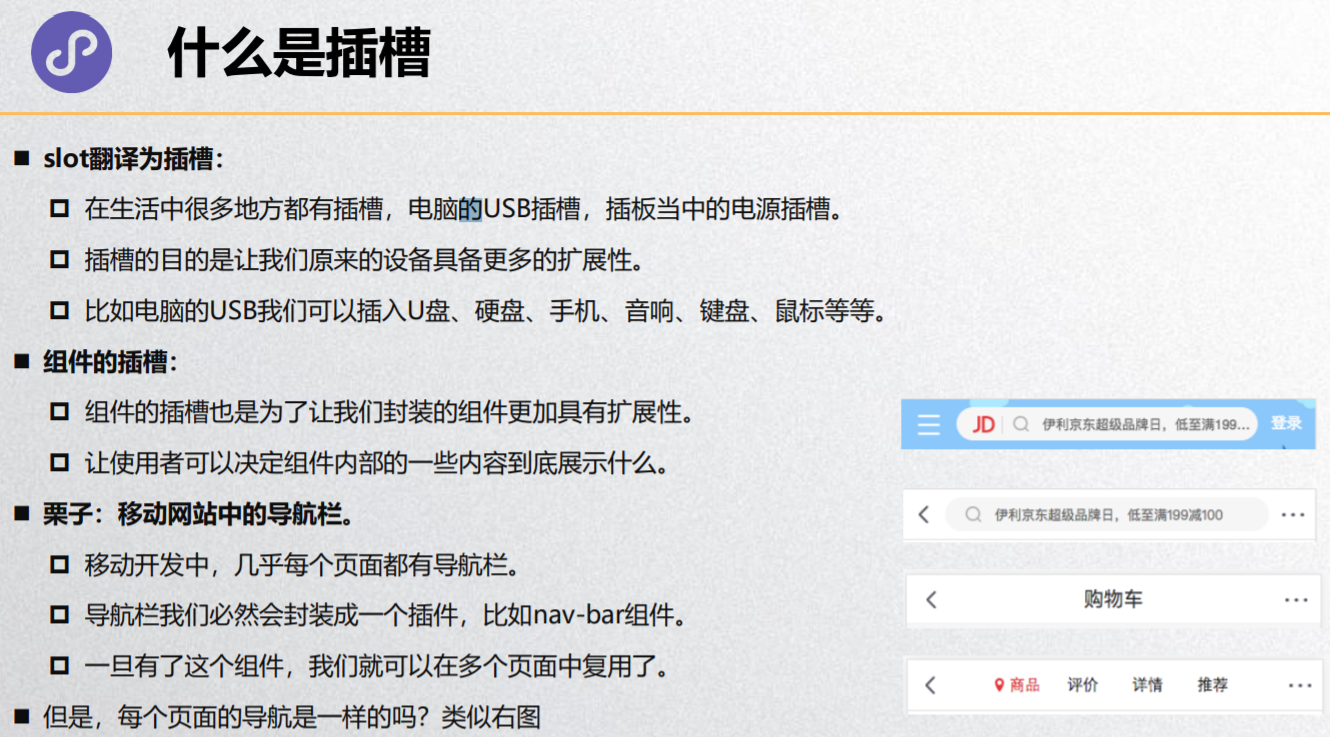
单个插槽的使用
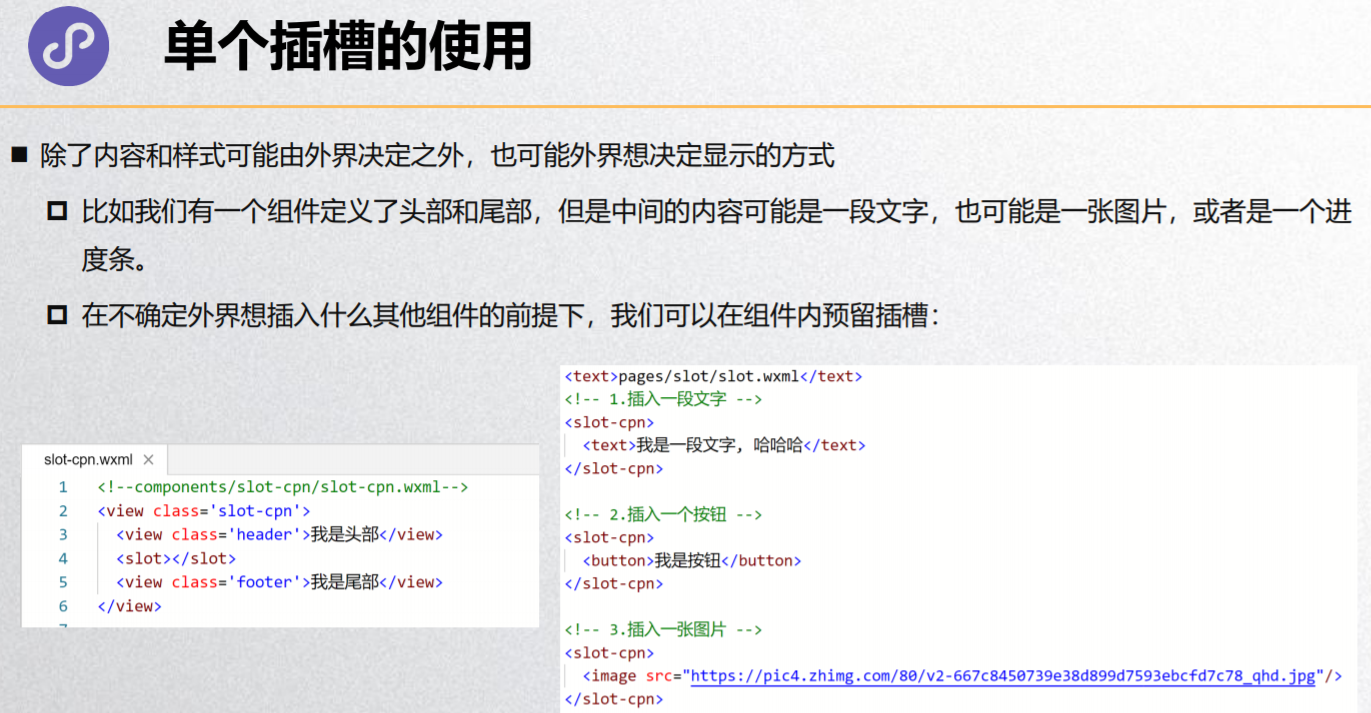
多个插槽的使用
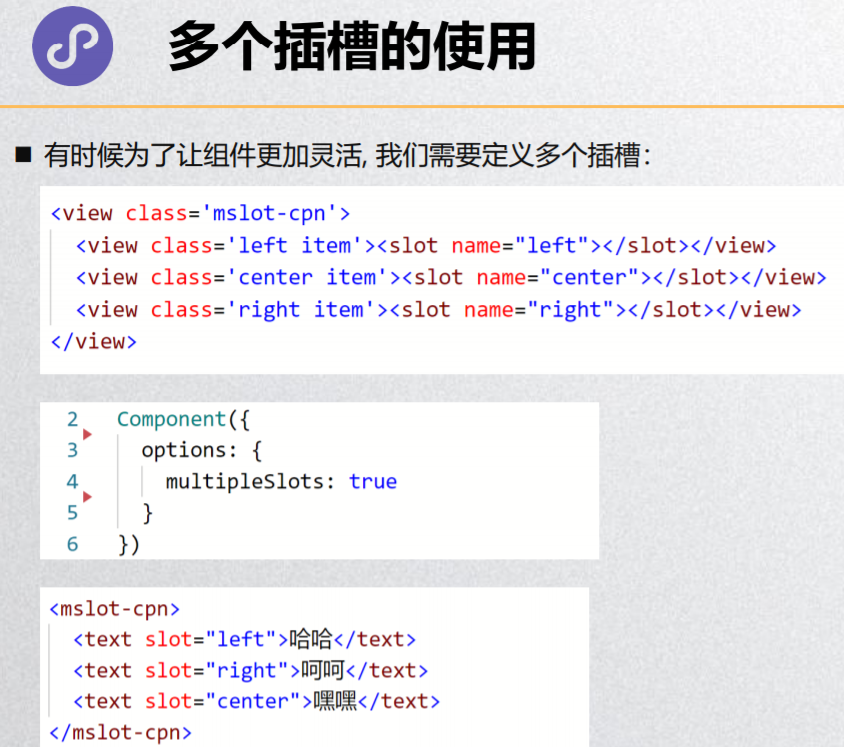
my-slot.wxml
<!--components/my-slot/my-slot.wxml-->
<view>我是组件的头部</view>
<slot/>
<view>我是组件的尾部</view>
my-mslot.wxml
<!--components/my-mslot/my-mslot.wxml-->
<view>我是mslot组件的开始</view>
<view class='slot1'><slot name="slot1"/></view>
<view class='slot2'><slot name="slot2"/></view>
<view class='slot3'><slot name="slot3"/></view>
<view>我是mslot组件的结尾</view>
home.wxml
<!-- 7.插槽的使用 -->
<!-- 7.1.单个插槽的使用 -->
<my-slot>
<button size='mini'>插入的按钮1</button>
<button size='mini'>插入的按钮2</button>
<button size='mini'>插入的按钮3</button>
</my-slot>
<my-slot>
<text>哈哈哈哈哈哈</text>
</my-slot>
<my-slot>
<image src="http://s3.mogucdn.com/mlcdn/c45406/170915_0a93207ci28kelh617k4hh62l65lb_640x960.jpg" />
</my-slot>
<my-slot>
<slider value='60'></slider>
</my-slot>
<!-- 7.2.多个插槽的使用 -->
<!--
注意事项:
1.给每一个插槽起一个名字: name属性
2.必须在Component对象中添加一个选项: options -> multipleSlots: true
-->
<button size='mini' bind:tap="handleChangeShow">切换显示</button>
<block wx:if="{{isShow}}">
<my-mslot>
<button size='mini' slot="slot2">我是插入的按钮</button>
<slider slot="slot1" />
<text slot="slot3">哈哈哈哈</text>
</my-mslot>
</block>
Component构造器
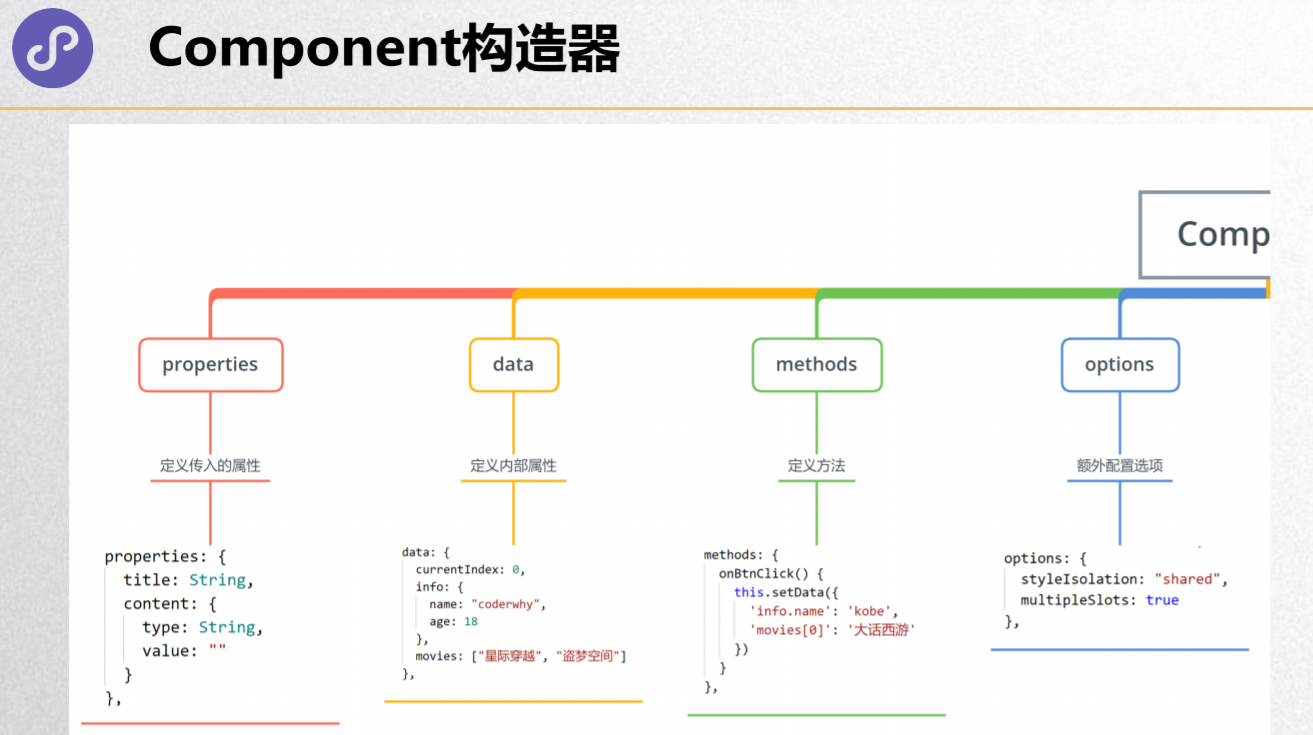
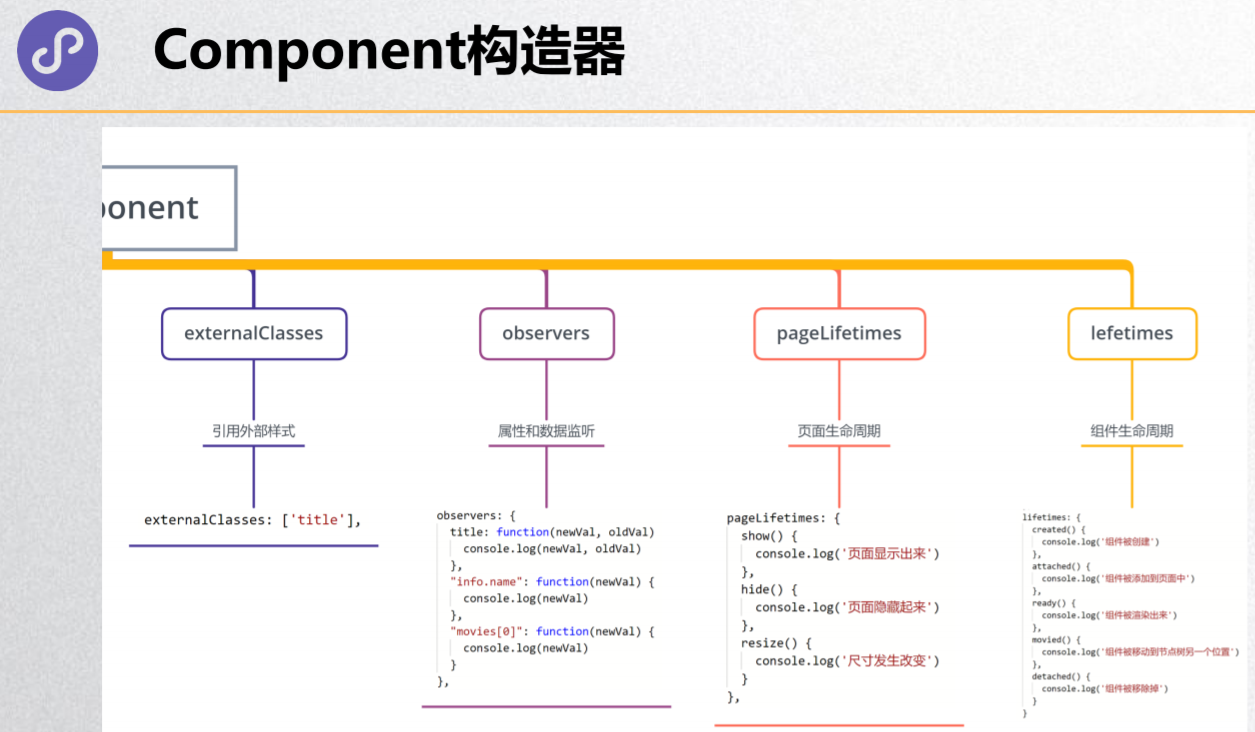
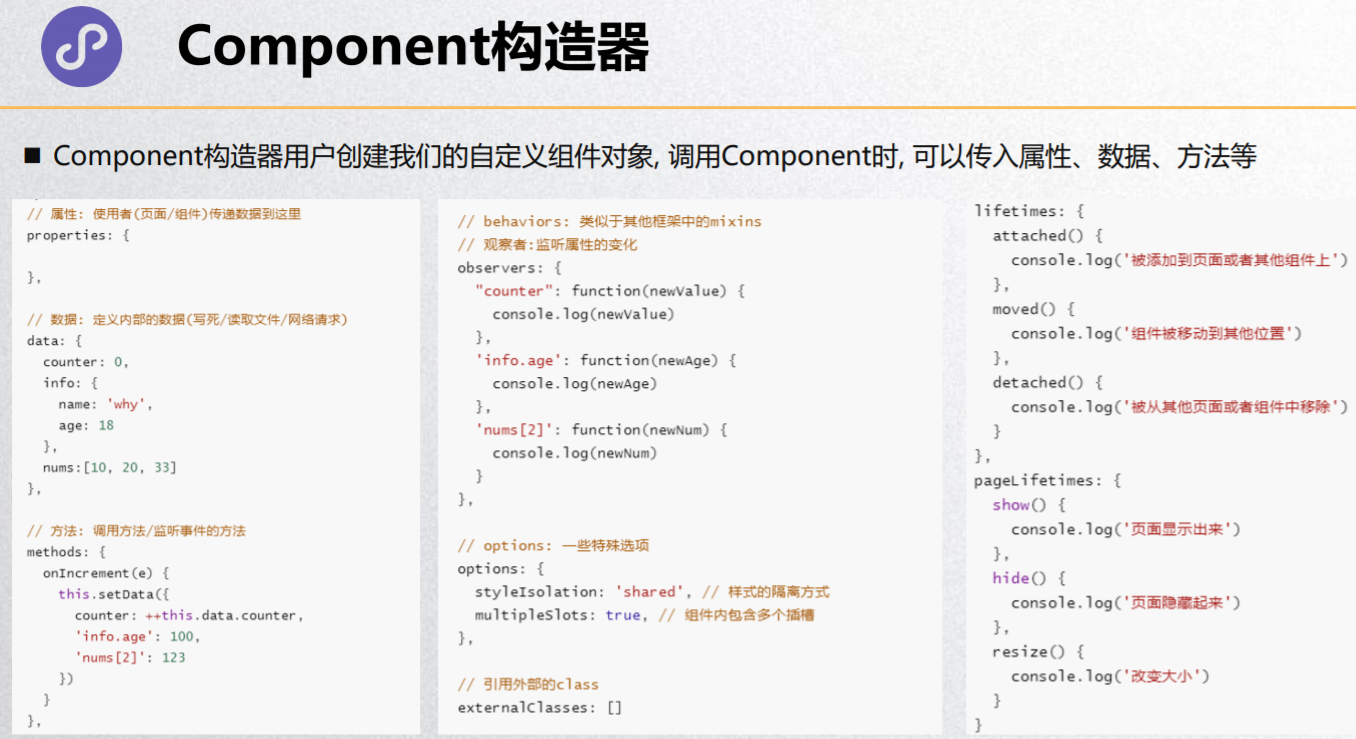
// components/my-mslot/my-mslot.js
Component({
// ----------- 让使用者可以给组件传入数据 --------------
properties: {
title: {
type: String,
value: '',
observer: function (newVal, oldVal) {
}
}
},
// ----------- 定义组件内部的初始化数据 --------------
data: {
counter: 0
},
// ----------- 用于定义组件内部的函数 --------------
methods: {
foo() {
}
},
// ----------- 定义组件的配置选项 --------------
// multipleSlots: 在使用多插槽时需要设置true
// styleIsolation: 设置样式的隔离方式
options: {
multipleSlots: true
},
// ----------- 外界给组件传入额外的样式 --------------
externalClasses: [],
// ----------- 可以监听properties/data的改变 --------------
observers: {
// 【没有oldValue。】
counter: function (newVal) {
console.log(newVal)
}
},
// ----------- 组件中监听生命周期函数 --------------
// 1.监听所在页面的生命周期
pageLifetimes: {
show() {
console.log('监听组件所在页面显示出来时')
},
hide() {
console.log('监听组件所在页面隐藏起来时')
},
resize() {
console.log('监听页面尺寸的改变')
}
},
// 2.监听组件本身的生命周期
lifetimes: {
created() {
console.log('组件被创建出来')
},
attached() {
console.log('组件被添加到页面')
},
ready() {
console.log('组件被渲染出来')
},
moved() {
console.log('组件被移动到另外一个节点')
},
detached() {
console.log('组件被移除掉')
}
}
})

















